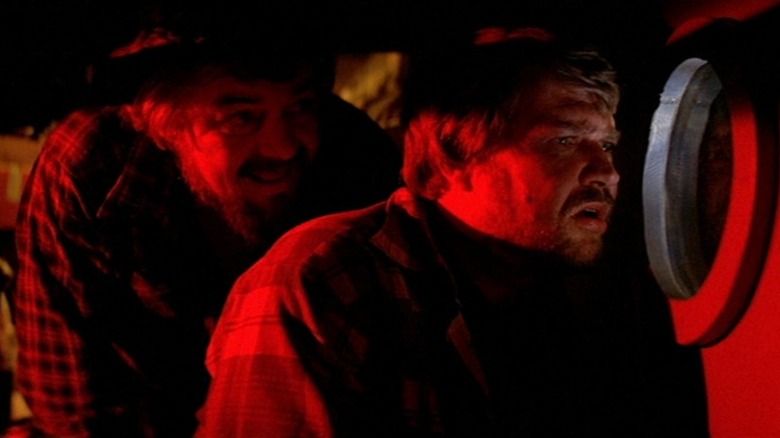How do you follow up a movie like "Halloween"? John Carpenter's cheaply made little horror film about a killer stalking teenagers in the suburbs transformed a generation's understanding of fear. A sequel would have been the obvious play, but Carpenter had other fish to fry. First came "Elvis," a made-for-television biopic that brought Carpenter and the actor Kurt Russell together for the first time. Later, Carpenter and his frequent collaborator Debra Hill went on vacation to Stonehenge. According to a SyFy retrospective, Carpenter began staring intently at nearby fog. "What if there's something in that fog?" he said to Hill. "Wouldn't that be scary?" That insight led to "The Fog," Carpenter's theatrical follow-up to "Halloween."
Like "Halloween," "The Fog" would tell the story of buried evil returning to haunt the modern day. But this film would differ in key respects. "Halloween" was a film of short sharp shocks, engineered so that the audience would gasp in the theater. "The Fog" was a ghost story suffused with atmosphere. The ghost pirates are bad enough, but the fog obscuring their movements and filling the streets of Antonio Bay is worse still. In fact, when constructing "The Fog," Carpenter had a very particular artist in mind: the film producer Val Lewton. "I love Lewton's films–they're very shadowy, all suggestion," he said. "I wanted to do 'Isle of the Dead' or 'I Walked With a Zombie.'"
The Lewton House Style
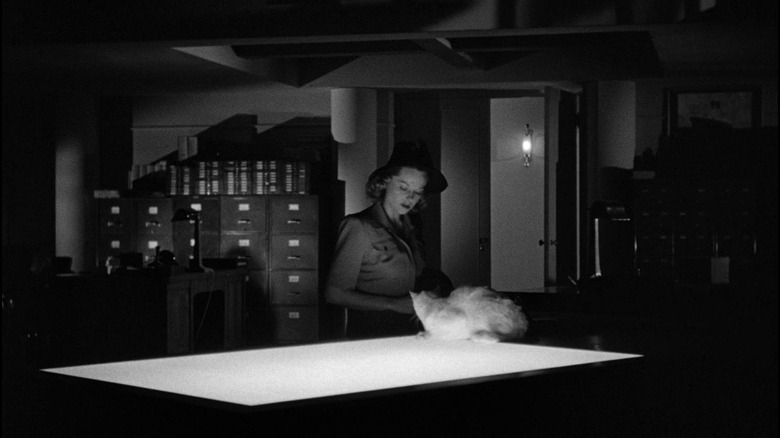
Val Lewton produced nine films at RKO Pictures between 1942 and 1946, all loosely categorized by the studio as horror. These films lack the iconography of Universal classics such as "Frankenstein" and "Dracula." They were low-budget pictures made in a short time frame and released as the bottom half of a double feature. But horror fans know that Lewton was the real deal. He came through the industry working under directors like Orson Welles and Alfred Hitchcock. He served for many years as the personal assistant to infamous producer David O. Selznick, who solicited his advice for key scenes in "Gone With the Wind" and then took all the credit. Eventually Lewton scored an opportunity at RKO Pictures to produce movies of his own. But this job came with a strict stipulation: Lewton's films had to be horror movies, to capitalize on the success of Universal Studios.
The podcast "You Must Remember This" discusses Lewton's dislike of the "Universal House Style." Universal had produced some of the most memorable horror films of the 1930s, and had decided by the 1940s that they had found the perfect formula for Hollywood success. Lewton himself was no stranger to formula. He had spent years writing novels in whatever genre was selling at the time. But he wanted his movies to surprise people, not simply gratify them. Lewton's horror movie outfit purposefully rejected Universal's formulas. Their films were often unnerving, but could segue at any time into melodrama, noir thriller, or knotty character study. Lewton's superiors were bewildered by his choices, and Lewton despised them in turn. His staff, on the other hand, loved him.
A Cat In The Dark
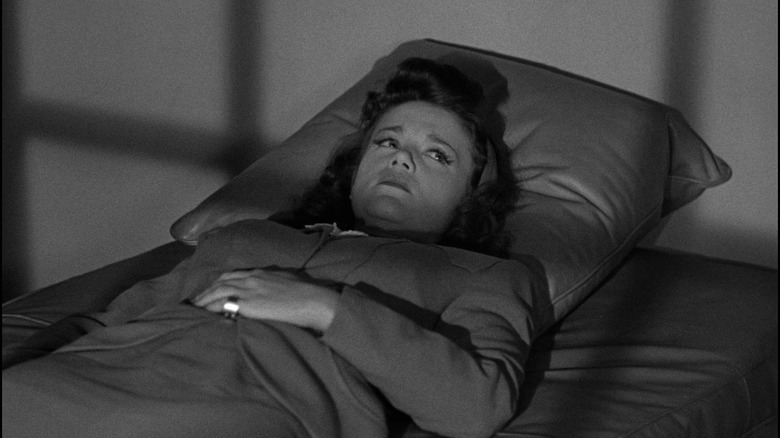
Lewton's idiosyncrasies as a producer are on full display in "Cat People," his first popular success and arguably the best film to pass through his hands. Despite the title, the film keeps its creatures off-screen and admits only grudgingly that they are real supernatural beings rather than figments of the imagination. The scariest moments take place in darkness or near-darkness and are scored by echoing silence and the growl of a panther. Lewton and his collaborators, like famed director Jacques Tourneur, knew they could not make a convincing monster from scratch with the money and time they had. So they created their "monster" through suggestion instead. The best movie monsters of Lewton's day were impressive creations in their own right, but "Cat People" made audiences jump with nothing more than a bus whistle.
"Cat People" further differs from the Universal standard by taking place in reality, or at least a rough approximation of it. Wheeler Winston Dixon would say in "A History of Horror" that Lewton's films were set in "a modern world with people who had passions, loves, hates…and sometimes fatal character flaws…" The mythical town of monsters and witches exists in "Cat People," but only in memories. The film's heroine Irena struggles with these memories and fears she will become a monster if she is not careful. Her husband, who has lived a charmed life, thinks Irena is crazy. His work partner Alice offers her advice, but quickly becomes the subject of Irena's frustrations. None of these characters are inherently good or evil, and the ending offers no solace for any of them.
The Fog Rolls In
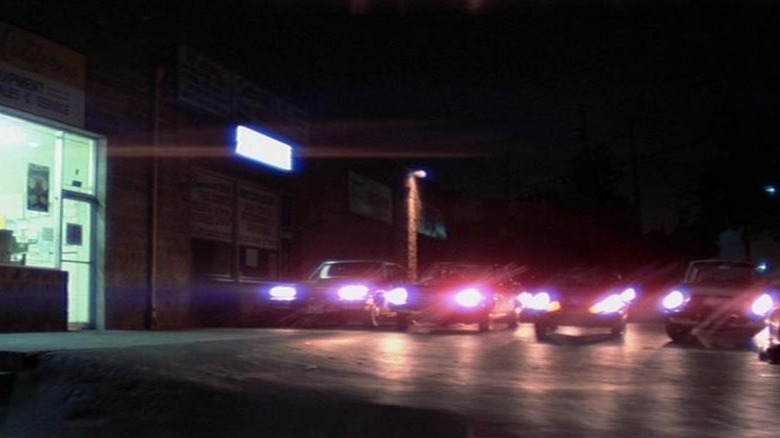
If Lewton spurned genre, Carpenter is a genre aficionado. "The Fog" lets the viewer know right from the start that its principal evil is supernatural. The titular fog itself glows in the dark and moves in ways regular fog does not. The ghosts that trail in its wake are elemental killers of the "Halloween" school. Everything is literal in a way that Lewton's films rarely are, for better or worse. Additionally, the characters of "The Fog" are archetypical, rather than the complicated personalities found in films like "Cat People." Even Stevie Wayne, the film's most memorable character, is a lively sketch rather than a three-dimensional human being. In this way, "The Fog" is less like a Val Lewton film than a Stephen King novel, utilizing a panoramic view to convey a community under attack by destabilizing forces.
On the other hand, Lewton and his crew clearly influenced the use of lighting in "The Fog." The film's best moments utilize light and darkness to suggest something waiting just outside of reach. The opening montage of "The Fog" tracks through Antonio Bay as electric lamps turn off, car lights turn on, and machines malfunction. Carpenter and his crew exert absolute control over what the audience can see and cannot see at any given time. The ghost pirates are at their most threatening as silhouettes, standing behind doors and offering no explanation as to what they want. They lose some of that allure as the film defines their motivations, but the milky-white fog itself remains a credible threat for what it signifies and obscures.
The Heart Leads
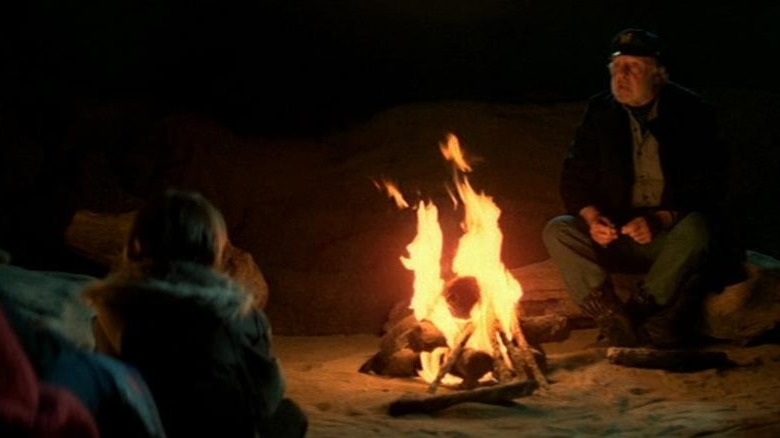
Val Lewton died of a heart attack at 46. Forced out of RKO Pictures, and left to make movies in other genres that never satisfied himself or his audience, he died frustrated and unfulfilled. The nine films he had made at RKO varied in quality and subject matter, from masterpieces to interesting failures. In Lewton's mind, each film was a hard-fought battle against an industry that did everything in its power to resist and confound his efforts. "Lewton always led with his heart," said Wheeler Winston Dixon, "which was predestined to be broken." According to "You Must Remember This," Director and Lewton collaborator Robert Wise would go further. "The motion picture business literally killed Val," he would say at Lewton's funeral.
Like Lewton, Carpenter has faced serious challenges throughout his career. He rarely had the luxury of money or time. When he did, critics and audiences rejected his work. "The Thing" was despised on its release in 1982, only to be reappraised in the following years as one of the best films ever made. Many of Carpenter's other films, from the goofy shenanigans of "Big Trouble in Little China" to the metafictional "In the Mouth of Madness," would follow similar arcs. John Carpenter is now 74 years old, and an acknowledged master of horror cinema. The world made space for him, as it would not for Lewton during his lifetime. But if not for Lewton and his team at RKO, who cut a path through Hollywood for unconventional genre movies to thrive, Carpenter may never have had a chance. The possibility haunts us still, like a ghost knocking at the door.
Read this next: The Horror Movies We Can't Wait To See In 2022
The post John Carpenter's Work On The Fog Was Inspired By A Master Of Classic Horror appeared first on /Film.

